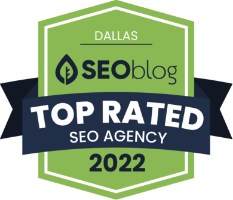
All Blogs,Digital Marketing, - October 12, 2021
A Deep Dive Into Facebook Ads: How to Create, Optimize, and Test Facebook Ads
Expert Tips For A Deep Dive Into Facebook Ads: How to Create, Optimize, and Test Facebook Ads
Marketing is the art of effectively speaking to prospective customers on their terms and convincing them that your particular product or service is genuinely worth spending some money on.
To carry out the subtle art as effectively as possible, people use many different channels. Still, some have only really started to become recognized for their full potential in recent times.
Until quite recently indeed, many marketers believed that Facebook marketing was essentially a waste of time – and if you’re the average Facebook user, you might also be suspicious that very few people end up clicking on those ads.
Though, you’d be wrong if you came to either of these conclusions.
Facebook advertising can be very effective indeed in a variety of different ways. It’s just a b matter of understanding which businesses are the best fit for Facebook ads and then knowing how to properly run successful ad campaigns tailored to the business in the right way.
Here’s a rundown of some of the basics you should understand about Facebook ads.
Are Facebook Ads Right for Your Business?
Although Facebook ads can be very effective, it’s essential to remember that they won’t be the best fit for every business model.
Before getting started with using Facebook ads, it’s essential to investigate whether or not your business is likely to be one of those that will benefit from this particular marketing approach. It’s also necessary to understand how Facebook ads have developed over time – such as the fact that they are now much more helpful than in the past for selling products directly to customers.
Here are some of the types of business models that might be a good fit for Facebook ads.
Low-Friction Conversion Businesses
“Low-friction conversion” refers to a business model where you don’t ask very much of your prospective clients upfront whatsoever.
When it comes to Facebook marketing, it’s important to remember that the people who click through to your site are likely not very invested and are not already highly motivated to purchase your product or service. For that reason, you need to make the process of converting visitors into leads as smooth and easy as possible.
It’s mainly because businesses such as Groupon that only asked for a simple commitment upfront – like signing up with an email address – tend to be especially well-suited to Facebook advertising.
Businesses Based on Small Purchases or Long Sales Cycle
Businesses based on earning revenue from their customers over a prolonged period, maybe as a result of repeated small purchases, are likely to do better in terms of benefiting from Facebook ads than businesses that try to sell expensive goods upfront.
This again is partly down to the fact that Facebook ads tend to attract casual interest. In contrast, people tend to only make large, expensive purchases after plenty of premeditation and consideration.
An ideal approach might see a business earning 20% payback on their Facebook ad on day one and 100% payback after six months.
Tips for Properly Targeting Your Facebook Ads
Facebook ads allow for exact targeting of your advertisements to particular demographics and prospective customer bases to ensure that your ad has the highest likelihood of being correctly effective.
Unfortunately, failing to target Facebook ads appropriately is the number one thing that makes them ineffective for many marketers.
Just a few of the various things that Facebook allows you to target your ads based on include:
- Language
- Relationship status
- Location
- Age range
- Interests
- Connections
- Education
Here are some of the targeting techniques you can employ using Facebook ads.
Targeting to Facebook Lookalike Audiences
Facebook offers the powerful ability to target your ads to “Lookalike Audiences,” which means targeting your ads to audiences that are similar to yours but that exclude your current audience.
If you have Facebook Pixel or other custom audience data that you can plug into the advertising tool, you will be able to use this service to break new ground potentially.
Retargeting to Existing Customers or Audiences
Facebook allows you to “retarget” ads to people who are already familiar with your business, products, and services by focusing on users who – for example – have already clicked on an advertisement of yours or visited your website without completing a purchase.
This can be a great strategy to close the deal and up the ante with new and alluring products or more dynamic and visually appealing ads than previously.
Detailed Interest Ad Targeting
Facebook allows for a truly staggering amount of specificity when it comes to detailed marketing. You can even market to individuals who have “liked” specific films or sports, among other things. As a general rule, the more focused you can get your ads, the likelier you will find an audience that is ideally in line with your particular product or service. On the other hand, if you are too broad, you can easily miss out. Wherever possible, go for maximum nuance and detail when targeting your ads.
Broad Category Ad Targeting
Going for a “broad category” approach to ad targeting instead of detailed interest ad targeting tends to be more expensive and result in fewer conversions.
While this should not be your first-line approach to Facebook advertising, broad category targeting may be helpful alongside detailed interest targeting in some instances. It’s something to try out in a balanced and tentative manner.
Utilizing Visuals for Ads
Visual elements are essential for getting people to click on your Facebook ads, so it’s necessary to go for high-quality images and graphics.
Avoid going for any low-quality pictures or very generic stock images, and don’t make your logo prominent (or even include it at all) unless you are a significant and recognizable company.
Instead, purchase high-quality images or look for unique and high-quality photos with a Creative Commons Licence, and emphasize pictures of people, clearly visible text with easily readable and well-designed typeface, and elements of humor if they work in the context of your ad.












